Outforia Quicktake: Key Takeaways
- Human activities are the primary threats to sea turtles, including bycatch, pollution, climate change, habitat loss, and illegal capture and trade.
- All sea turtle species are endangered and are at risk of extinction.
- Sea turtles are ancient marine reptiles that have been around for more than 110 million years.
- Numerous conservation organizations are working to protect sea turtle populations and their habitats.
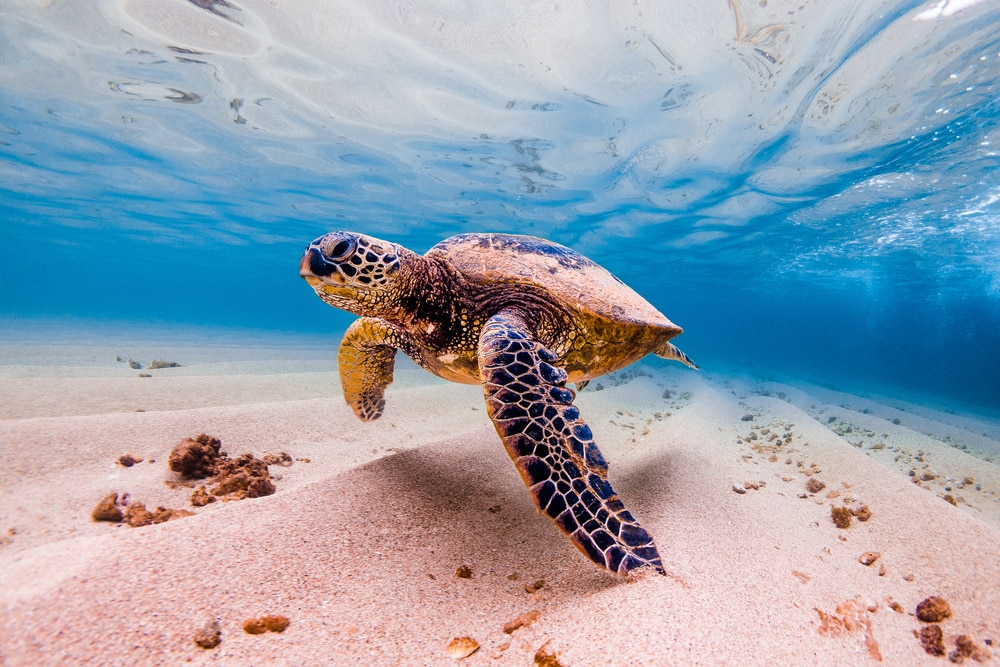
Sea turtles have existed on Earth for millions of years, but various human activities have caused sea turtles to become endangered. All sea turtle species are at risk of extinction due to bycatch, pollution, climate change, habitat loss, and illegal capture and trade.
Sea turtles occur worldwide. Most species are highly migratory and travel thousands of miles each year. Sea turtles nest on land, and hatchlings are especially vulnerable to human activities and predators.
We’re going to take a deep dive into the different types of sea turtles and why sea turtles are endangered.
What Are Sea Turtles?

Sea turtles are ancient marine reptiles that have been around for more than 110 million years! This means they were alive in the Early Cretaceous period of the Mesozoic Era, which is when dinosaurs roamed the Earth.
There are seven sea turtle species that belong to the superfamily Chelonioidea. Within this superfamily includes three families:
- Dermochelydiae – This family includes the largest living sea turtle, the leatherback sea turtle, and its extinct relatives.
- Cheloniidae – This family includes the other six living sea turtles. They all share a common trait of stronger front limbs than back limbs.
- Ctenochelyidae – This is an extinct marine turtle family that once lived in the ancient Western Interior Seaway during the Cretaceous period.
Sea turtles are considered a pelagic species. This means they reside in open ocean habitats. However, some species frequent coastal waters.
Although they can take deep dives, sea turtles need air to breathe. They’ll travel close to the surface to come up for air at a few minute intervals.
Male sea turtles don’t return to shore after they hatch and reach the ocean. Females come ashore during nesting season each year to lay eggs.
Why Are Sea Turtles Endangered?
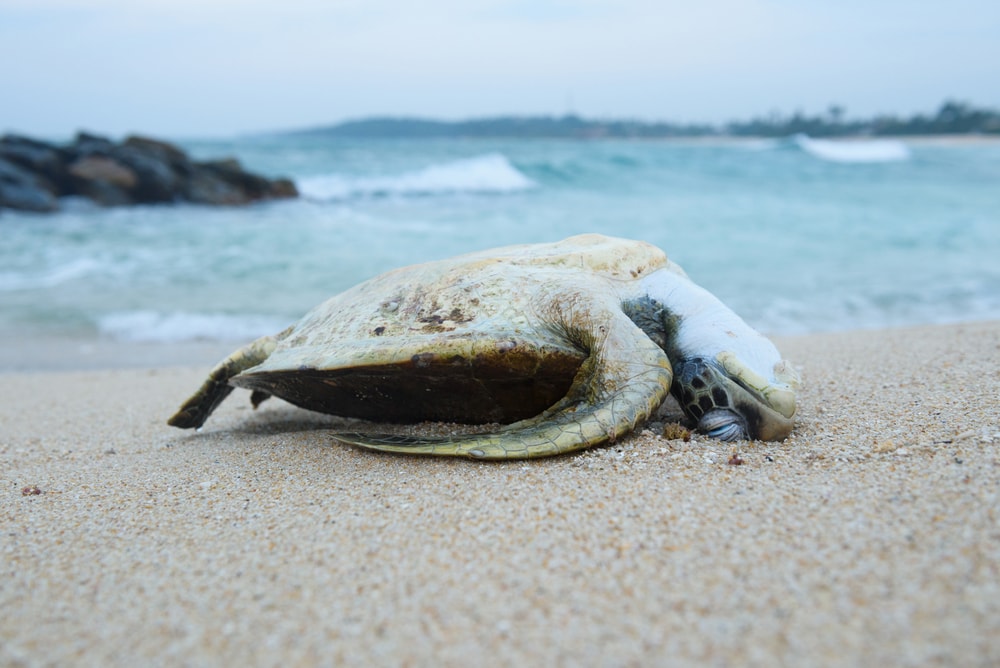
There are several factors that contribute to sea turtle population depletion. The primary threat to sea turtles is human activities.
Most sea turtle species have remained endangered under the Endangered Species Act for more than 50 years. Conservation efforts have helped keep some populations stable, while other populations are still declining.
Sea turtles can get caught in fishing gear, mistakenly eat trash out at sea, and lose their nesting sites due to coastal development.
Amongst these threats and several others, conservationists have continuously battled to keep sea turtle populations from going extinct.
Bycatch in Fishing Gear
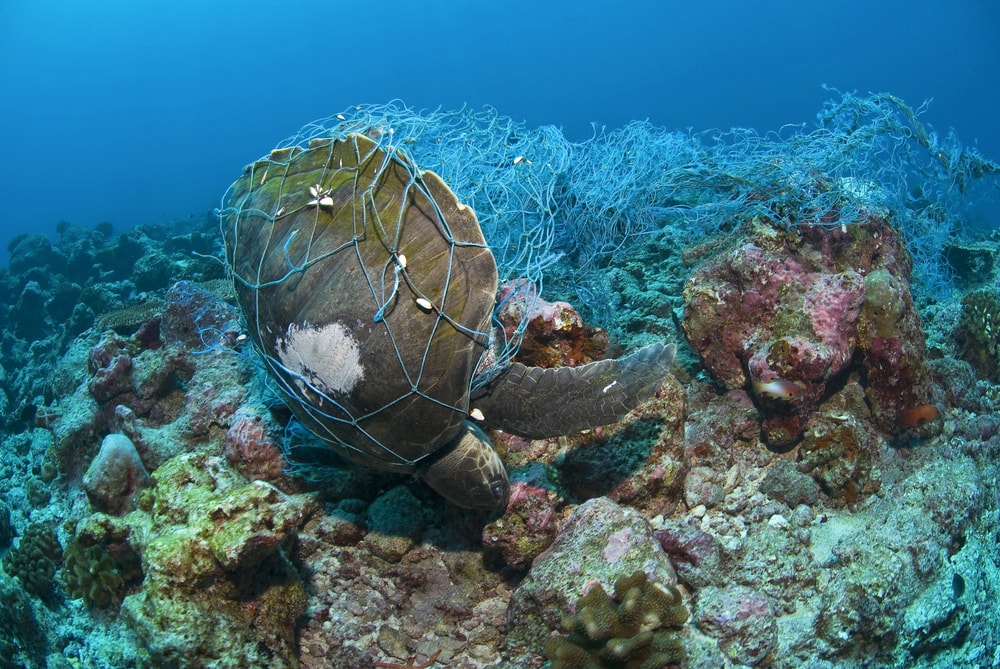
The biggest threat to sea turtle populations today is bycatch in fishing gear. Bycatch occurs when sea turtles, or any other marine animal, is accidentally caught by fisherman. This includes fishing with bottom trawls, gillnets, and longlines.
Bycatch also occurs when non-target marine animals are hooked or become entangled in fishing nets and other gear.
Thousands of sea turtles fall victim to bycatch each year. If sea turtles get caught in fishing nets as a result of bycatch, they’re usually unable to reach the surface to breathe. As a result, sea turtles typically die from bycatch due to drowning.
The National Oceanic and Atmospheric Administration (NOAA) and other conservation organizations educate the public on the dangers of bycatch and harmful fishing methods. These efforts are made in an attempt to change harmful fishing practices and find alternative fishing methods.
Illegal Harvesting and Poaching

Widespread laws and regulations have reduced harvesting and poaching activities of sea turtles and sea turtle eggs. However, illegal harvesting of eggs and sea turtle poaching still occurs.
Sea turtles are illegally harvested for their meat, eggs, shells, and other parts. Sea turtles are also poached to be used for traditional medicines and religious purposes.
For example, green sea turtles have long been used in Indonesian Hindu ceremonies for sacrificial purposes.
Sea turtle eggs and meat are a food source for many communities around the world, especially in coastal areas of Central America and Asia.
Sea turtle shells are sought after for the illegal shell trade. The most sought after sea turtle for the shell trade is the hawksbill sea turtle.
The hawksbill has a beautifully-colored shell featuring shades of amber, orange, brown, and yellow. The shells are turned into jewelry, decorations, and other nonessential items.
Habitat Loss and Fragmentation
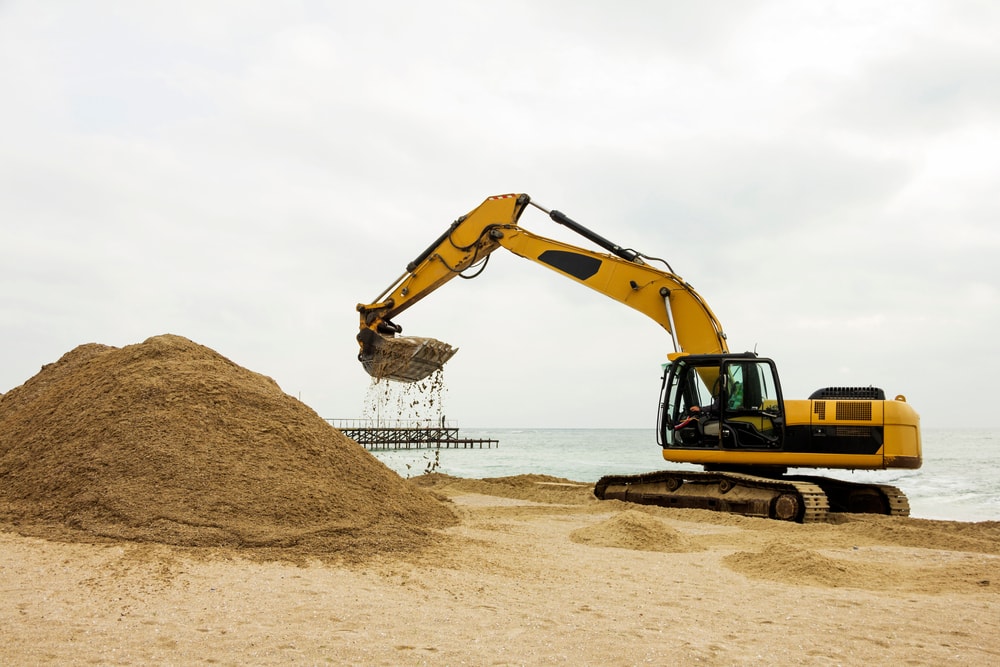
The greatest risk of habitat loss for sea turtles comes from the degradation of their nesting sites.
All sea turtle species lay their eggs on land. Most species lay their eggs on sandy beaches. Several factors that can lead to sea turtle habitat loss or fragmentation include:
- Beach vehicle traffic
- Coastal development
- Sedimentation and nutrient run-off
- Light pollution
- Shoreline armoring
Beach vehicle traffic can harm sea turtle nesting sites. Vehicles can crush sea turtle eggs, hatchlings, and compact sand.
Females may not have the ability to build a nest in the sand if it’s packed down. Tire tracks can give hatchlings a difficult time reaching the sea.
Coastal development can cause sea turtles harm in several ways. Altering coastlines can ruin sea turtle nesting sites and deter females from returning to preferred nesting sites. It can also lead to more waste in the ocean and light pollution.
Artificial lights can disorient and confuse hatchlings, making it difficult for them to find their way to the sea. Coastal development can also lead to sediment and nutrient runoff, which pollutes coastal waters.
Shoreline armoring is the construction of physical barriers as a means for coastal erosion prevention.
Physical structures are built to protect coastal infrastructure. Although shoreline armoring is supposed to help with coastal erosion, it also contributes to the destruction of sea turtle nesting sites.
Vessel Strikes
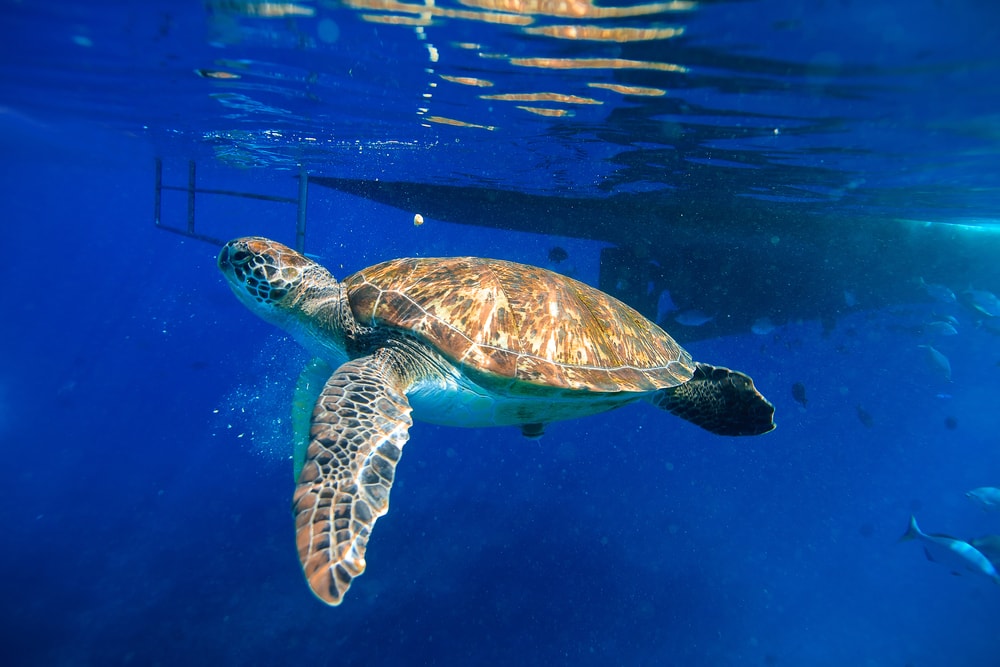
Sea turtles are also at risk in their open ocean habitat due to vessel strikes. Since sea turtles frequently come up to the surface for air, they run the risk of being hit by boats.
Sea turtles can also fall victim to vessel strikes in coastal waters where they forage for food.
According to the NOAA, hundreds of sea turtles are injured or killed by vessel strikes in the US every year. However, many vessel strikes may go undocumented if boaters are unaware of the strike or don’t report it.
To prevent vessel strikes, boaters can try to keep an eye out for sea turtles in the water to avoid hitting them. Schools of small fishes and groups of jellyfish can also indicate that sea turtles may be in the area.
Climate Change
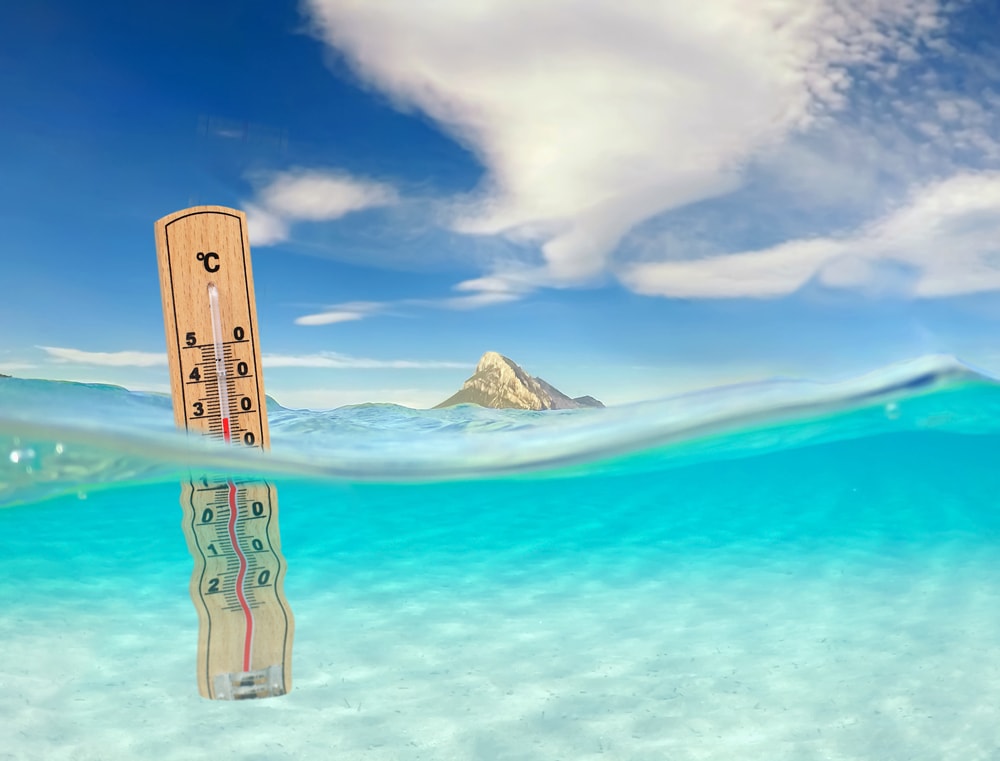
As the Earth’s temperature continues to rise primarily due to human activities, climate change has become an increasing concern. There are numerous impacts that climate change can have on the Earth and its wildlife.
A number of effects that climate change can have on sea turtles include:
- More frequent and stronger storms
- Warming oceans
- Sea level rise
- Warmer nesting sites
Ocean currents can change as a result of warming temperatures. Melting ice sheets and glaciers are causing sea levels to rise, which leads to nesting habitat loss.
One of the biggest threats caused by climate change is warmer beach sand. Sand temperatures are important for the incubation of sea turtle eggs.
Warmer sand temperatures result in more females being born. This hinders sea turtles’ ability to reproduce, as there are less male turtles for females to mate with.
Beach Trash and Plastic Pollution
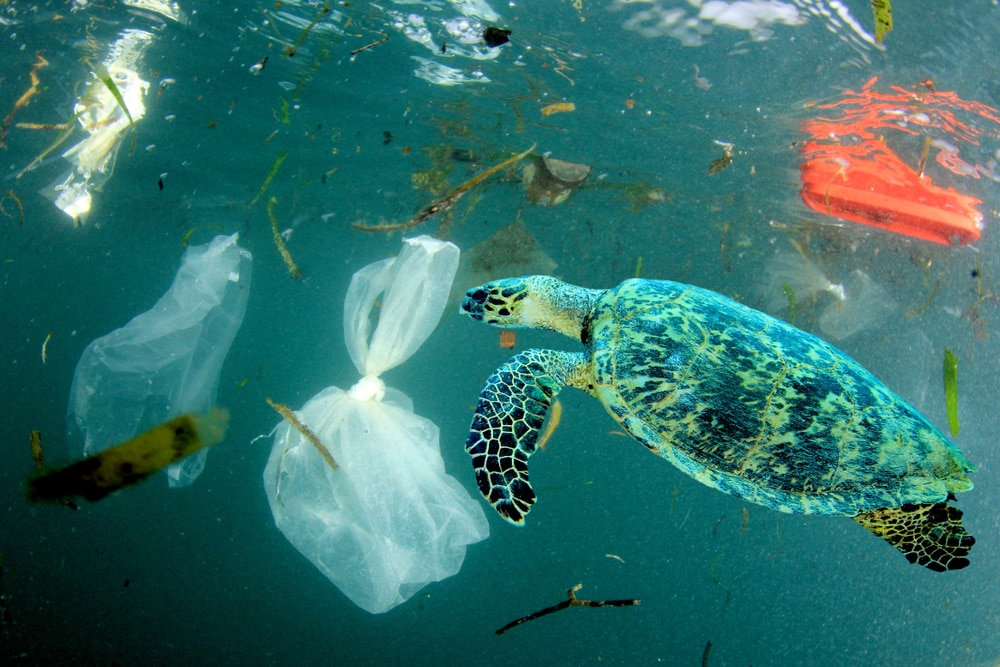
Trash that accumulates on beaches and in oceans can injure or kill sea turtles. Trash left on beaches can obstruct hatchlings from reaching the sea. It can also make its way into the ocean, where sea turtles can mistakenly eat it or become entangled.
Research conducted on marine debris ingestion by sea turtles states that up to 52% of sea turtles have potentially consumed plastic or other harmful debris.
The North Pacific Ocean houses the largest accumulation of plastic in the world. It’s so large that it’s been named the Great Pacific Garbage Patch.
Sea turtles that mistake plastic for food will consume it and run the risk of internal injury or choking. Plastics, such as plastic bags or soda rings, can cause sea turtles to become entangled. Sea turtles that become entangled in trash may become stranded.
Oil Spills

Oil spills are disastrous for all marine life and sea birds. Oil spills can contaminate shorelines and harm hatchlings and females.
Oil can be ingested by sea turtles through oil vapors, oil in prey, or by consuming oil that’s sitting on the surface when coming up for air.
Sea turtles can also become coated in oil, which reduces their ability to swim. Oil spills not only have a direct impact on marine life, but clean-up procedures can also cause harm.
One clean-up method involves setting freshly spilled oil on fire, which can release toxic smoke. Burning the oil can also kill sea turtles directly if they’re in the area at the time of burning.
Large machines used to clean up oil can prevent females from coming ashore to their nesting sites.
If sea turtles consume oil, it can absorb into their bodies and cause harm to the lungs, liver, and heart. It can also harm hatchlings if a mother sea turtle ingests oil while pregnant.
The largest oil spill in history was the Deepwater Horizon oil spill that occurred in the Gulf of Mexico in April 2010.
The massive oil spill injured and killed a wide variety of marine life and other animals, such as birds, fishes, and marine mammals.
At least five of the seven sea turtle species were affected in the spill. Researchers estimated that between 60,900-173,600 juvenile and adult sea turtles were killed as a result of the oil spill. Tens of thousands of hatchlings were also killed as a result of the spill and clean-up procedures.
You may also like: How Long Do Sea Turtles Live? All About Their Best Kept Secret
Types of Sea Turtles
There are seven types of living sea turtles found around the world. All sea turtles, except for the flatback sea turtle, visit or live in US waters.
Most of a sea turtle’s life is spent out in the deep sea. Females come to coasts every year to lay eggs. Males are completely pelagic once they enter the ocean after hatching.
1. Green Sea Turtle
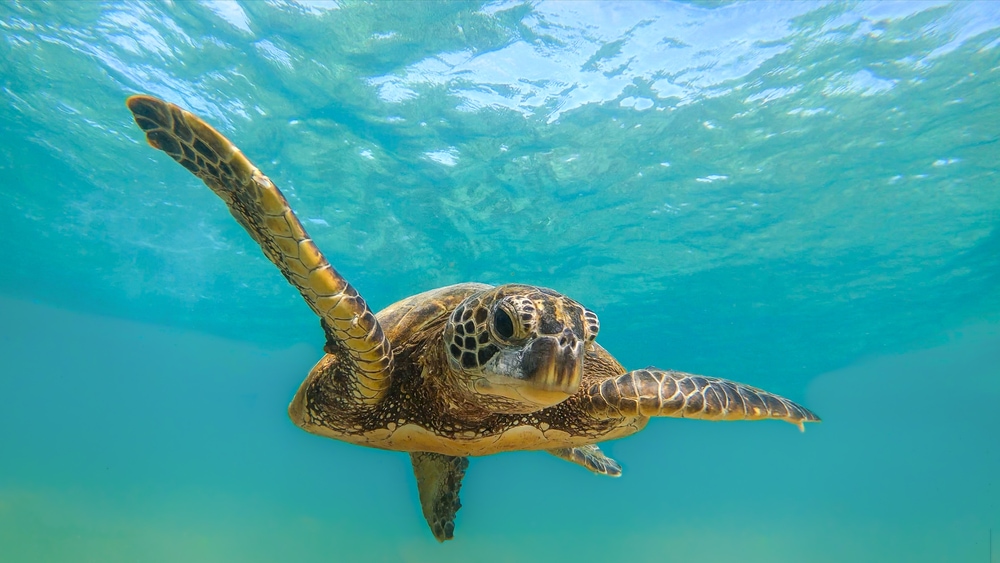
The green sea turtle gets its name from the green hue of its skin. The green color is a result of its main diet of seagrasses and algae. Several green sea turtle distinct population segments (DPS) are endangered, including:
- Central South Pacific DPS
- Central West Pacific DPS
- Mediterranean DPS
Other populations are threatened under the ESA. Green sea turtles are medium-sized. Most adults reach up to 4 ft (1.2 m) and can weigh up to 400 pounds (181 kg). Green sea turtles occur all around the world.
Some of the largest nesting populations occur in Costa Rica and Raine Island, Australia. In the US, green sea turtles nest on the coasts of the Hawaiian Islands, Puerto Rico, Florida, and the Virgin Islands.
2. Hawksbill Sea Turtle
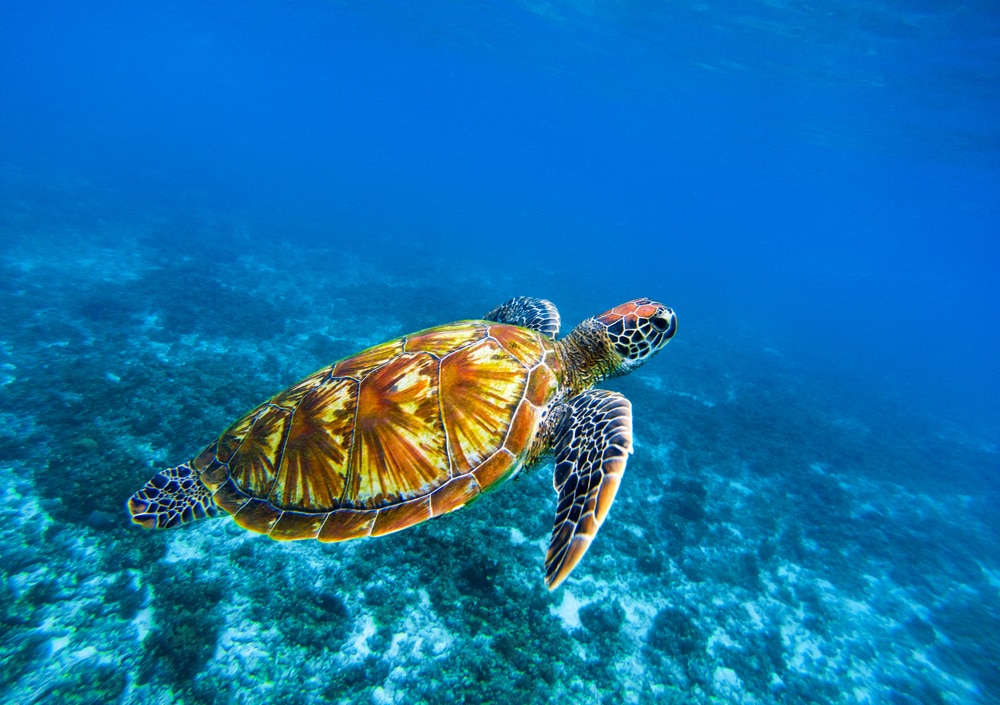
The hawksbill sea turtle was last assessed by the International Union for Conservation of Nature (IUCN) in 2008 as critically endangered. It’s considered endangered under the ESA throughout its range.
The largest populations of hawksbill sea turtles occur in the Caribbean sea and the Indian and Indo-Pacific Oceans. Large nesting sites are found along the coasts of Australia, Solomon Islands, and Indonesia.
Although hawksbill sea turtles are found in US waters, they rarely nest there. Their preferred habitat includes healthy coral reefs where they forage for food. Hawksbill sea turtles love feeding on sea sponges. They also like jellyfish, sea urchins, mollusks, and crustaceans.
3. Loggerhead Sea Turtle
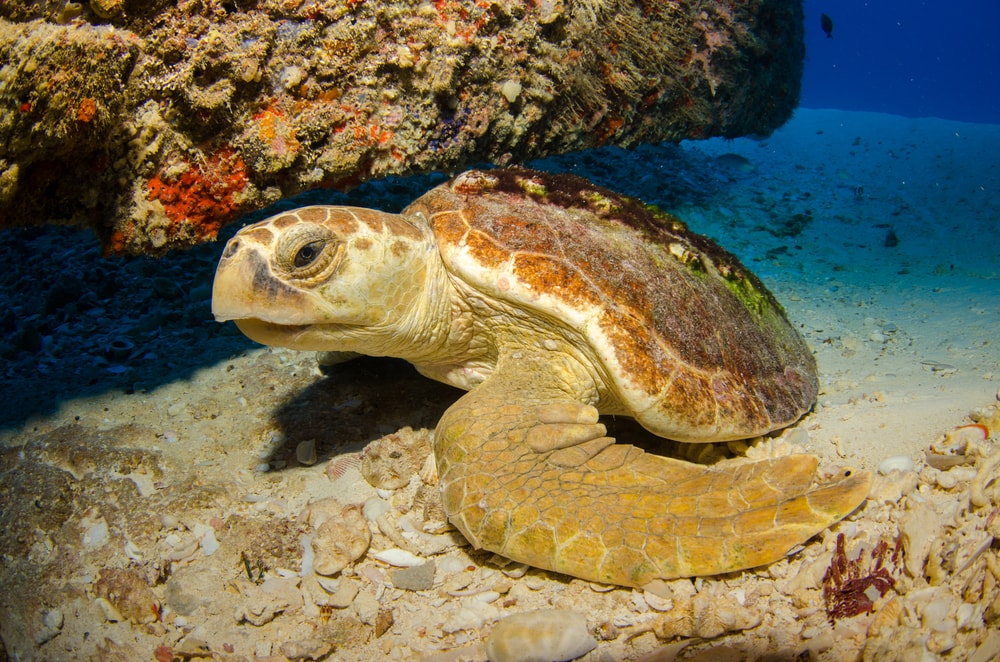
Loggerheads are the most common sea turtle species that nest in the US. They also occur worldwide. Five of the nine loggerhead DPS are endangered and the rest are threatened under the ESA.
The North Atlantic loggerhead DPS nests along the coast of South Florida and South Carolina, Georgia, and North Carolina.
Loggerheads are named for their large heads. They have strong jaws that help them crack open hard-shelled prey. Most sea turtles are omnivores or herbivores. The loggerhead sea turtle is primarily carnivorous.
North and South Pacific hatchlings participate in a trans-Pacific migration, beginning in Japan and Australia. They travel almost 8,000 miles (12,875 km) across the Pacific to the coasts of California, Mexico, Peru, and Chile.
4. Leatherback Sea Turtle
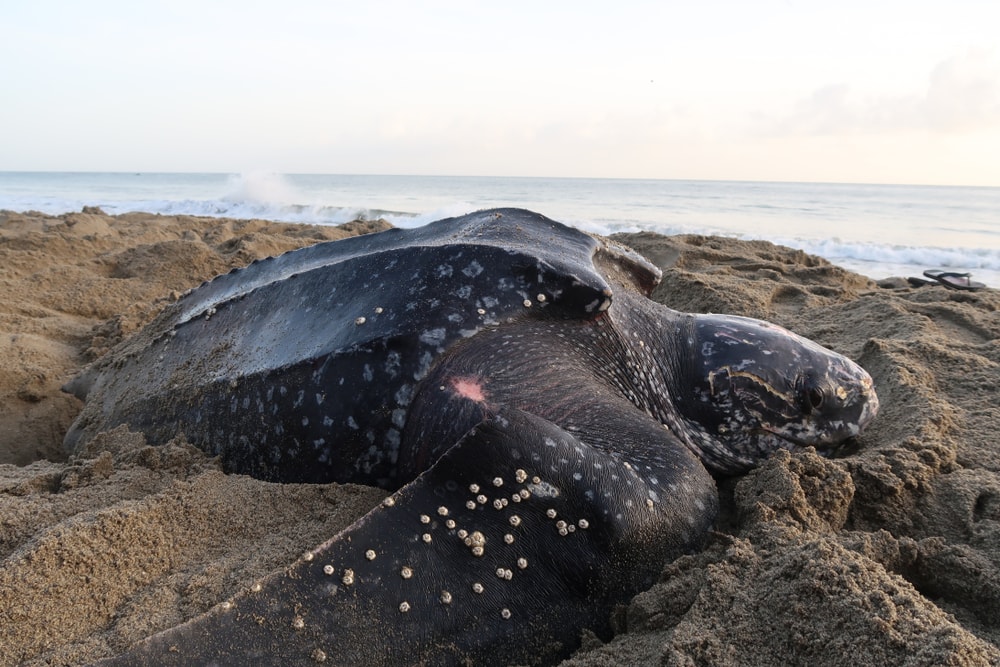
The leatherback sea turtle is the largest of all the sea turtle species. It can reach up to 6 ft (1.8 m) in length and weigh as much as 1,400 pounds (635 kg).
Leatherback sea turtles are named for their soft shells, which have a rubber-like texture.
Most sea turtle species participate in long migrations. Leatherback sea turtles have been observed as the most migratory species. They may travel more than 10,000 miles (16,093 km) in just one year. This sea turtle is also a deep diver, reaching depths up to 4,000 ft (1,219 m).
The Eastern and Western Pacific DPS have declined by more than 80% over the last three decades. Pacific leatherback sea turtles are considered the most at-risk subpopulation of extinction.
Leatherback sea turtles closely resemble their ancient relatives that lived during the age of dinosaurs. These turtles were once abundant in almost every ocean in the world.
5. Kemp’s Ridley Sea Turtle
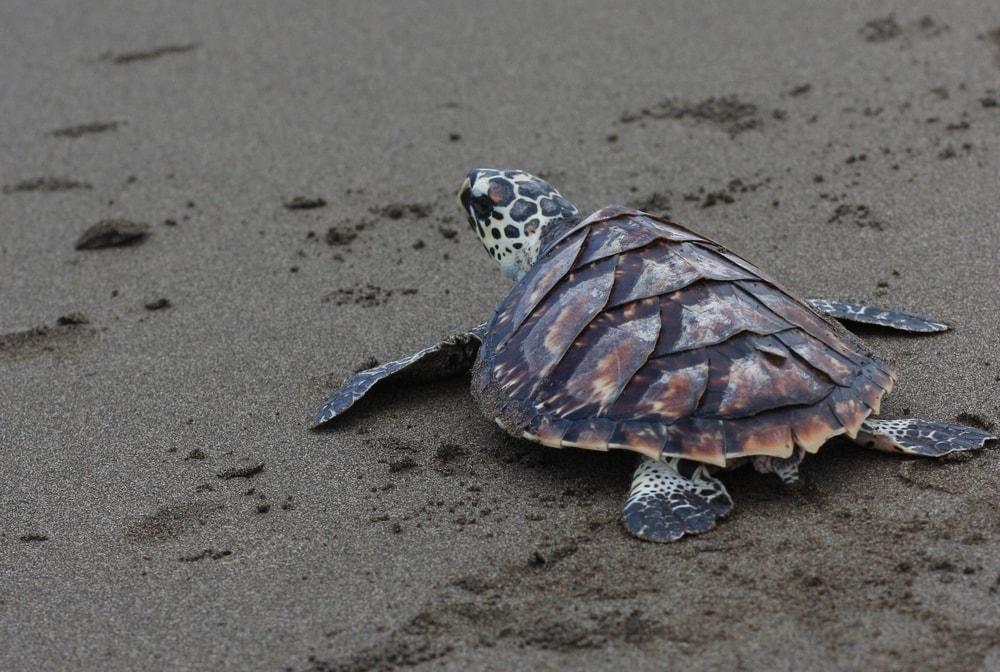
The Kemp’s ridley sea turtle is listed as critically endangered under the ESA and the IUCN Red List. It’s one of the rarest and most restricted sea turtle species.
Based on the last population assessment of Kemp’s ridley sea turtles by the IUCN in 2019, there are about 22,341 individuals left in the wild.
Kemp’s ridley sea turtles are also one of the smallest sea turtle species. They reach about 2 ft (61 cm) in length and can weigh up to 100 pounds (45 kg). Their name comes from Richard M. Kemp, who discovered the species in 1906.
The largest concentration of Kemp’s ridley sea turtles is in the Gulf of Mexico. Most females nest in Tamaulipas, Mexico.
Kemp’s ridley sea turtles are one of the only two sea turtle species that participate in a unique nesting behavior called arribada. Female sea turtles typically nest solitarily. Female Kemp’s ridley turtles nest in large, synchronized groups between April and July.
6. Olive Ridley Sea Turtle
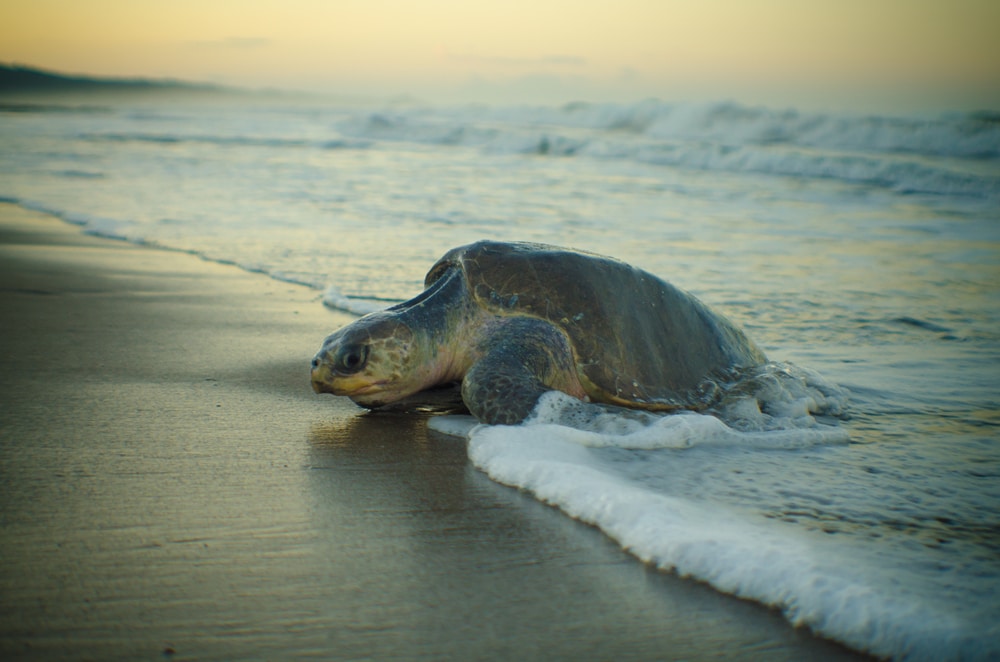
The olive ridley sea turtle is listed as endangered under the ESA for the Mexico Pacific coast DPS. All other populations are considered threatened.
They’re listed as a Convention on International Trade in Endangered Species (CITES) Appendix I species. CITES Appendix I animals and plants receive the most protection against international trade.
The olive ridley sea turtle shares some similarities with the kemp’s ridley sea turtle. Olive ridley turtles are also small and participate in arribada nesting.
These turtles are found throughout the Pacific, Atlantic, and Indian Oceans. The largest arribada nesting site for this species is in La Escobilla, Mexico. In the Pacific, large nesting sites are found in Costa Rica on the beaches of Nancite and Ostional.
7. Flatback Sea Turtle
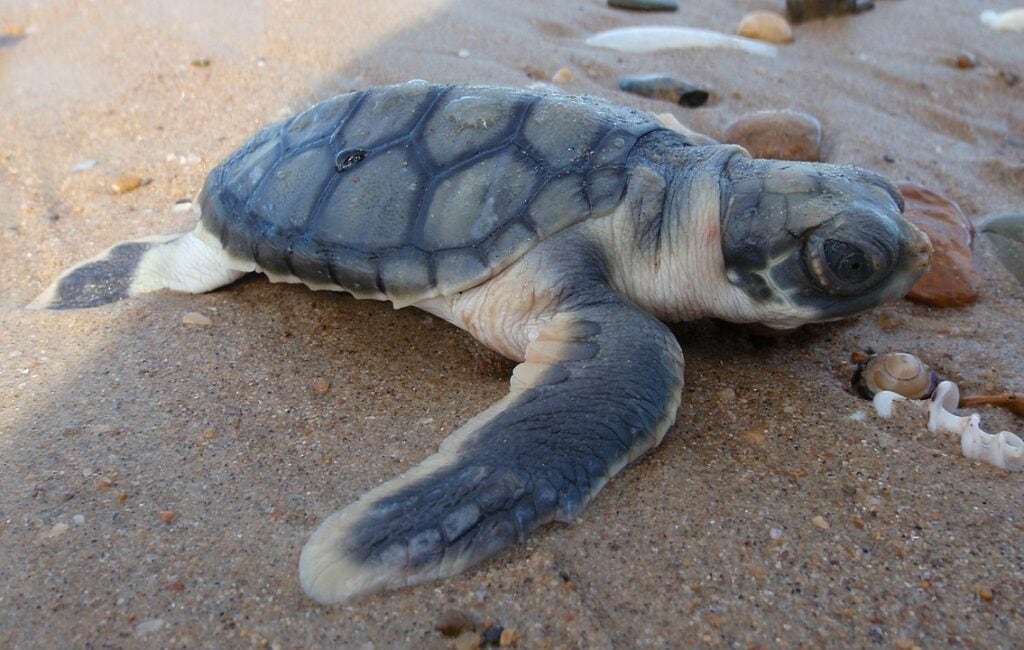
The flatback sea turtle has the most insufficient population data. They were last assessed by the IUCN as vulnerable in 1996, but population data is deficient and needs to be updated.
The Australian government classified the species as vulnerable in July 2000.
Most sea turtle species are found in multiple oceans and seas around the world. Yet, the flatback sea turtle has the most limited range.
It’s the only sea turtle not found in US waters. Its range is exclusive to Australia and Papua New Guinea. Flatback sea turtles also occur in more shallow waters and aren’t highly migratory.
This species eats a wide variety of soft-bodied prey, such as soft corals and jellyfish. They forage in shallow waters less than 197 ft (60 m) in depth.
You may also like: Turtle Vs Tortoise: 7 Key Differences Detailed With Images And Facts
Conservation Efforts
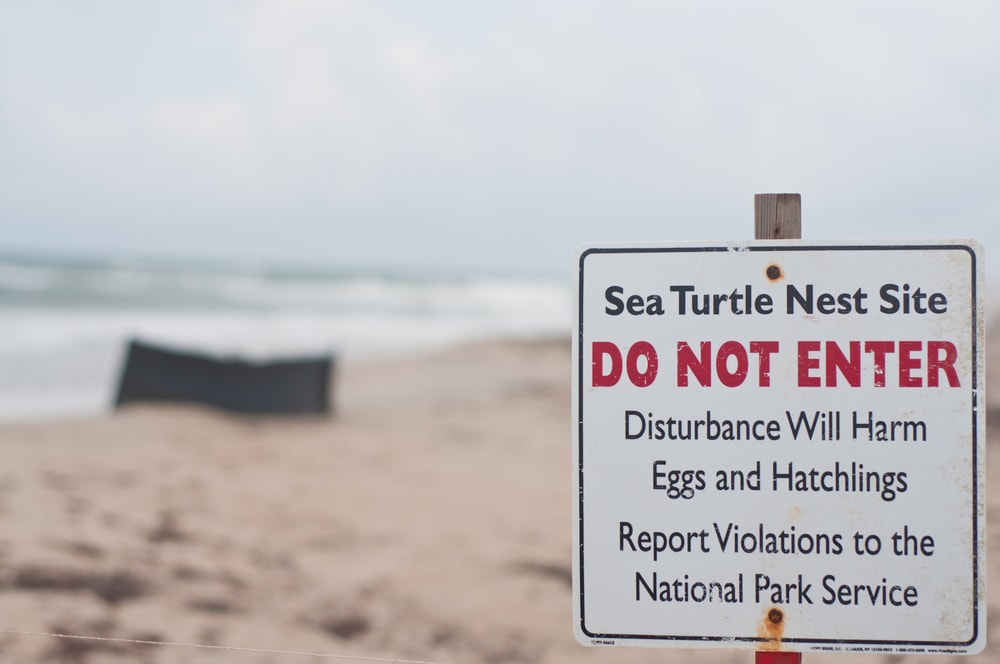
There are several conservation organizations dedicated to bringing sea turtle populations back from continuous decline.
The NOAA is responsible for the domestic and international conservation and recovery of sea turtles in their open ocean habitat.
The US Fish and Wildlife Service is responsible for the conservation and recovery of sea turtles on land nesting sites in the US.
The NOAA provides a list of recommendations for what the public can do to help save sea turtle populations. Some of their suggestions include:
- Be more conscious about seafood consumption and sourcing
- Get involved in sea turtle conservation efforts, such as beach clean up and nest watch
- Contact proper local authorities if you stumble upon a sick or injured sea turtle
- Reduce the use of plastics, such as plastic water bottles and bags
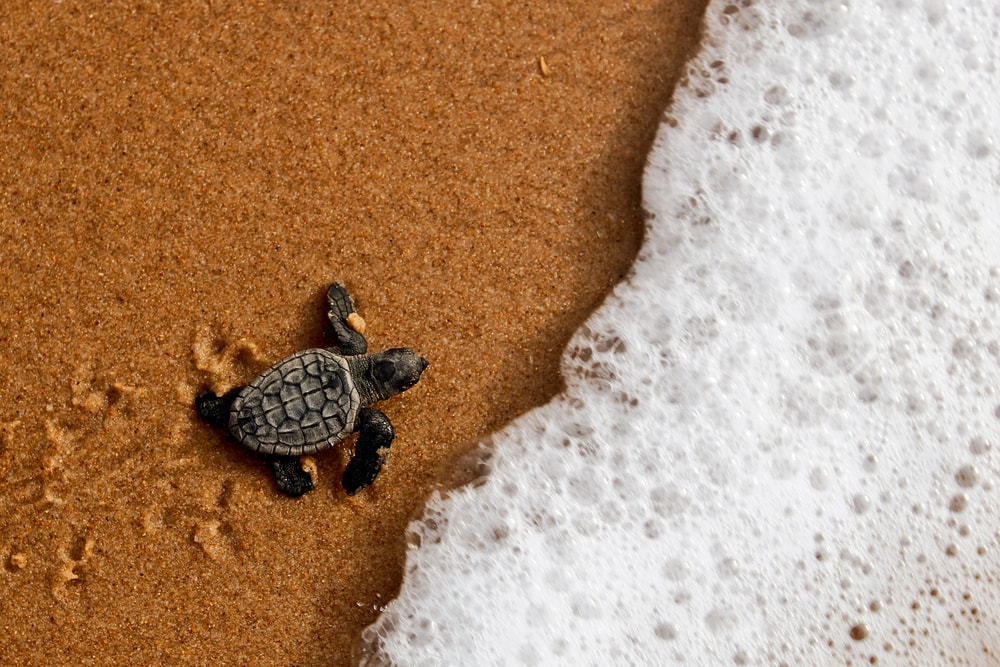
Domestic and international laws and regulations are important for the conservation of sea turtles.
The Inter-American Convention for the Protection and Conservation of Sea Turtles (IAC) is a treaty amongst several participating countries to promote sea turtle conservation.
The IAC developed regulations that would help benefit sea turtle populations in the US and Central and South America.
The Food and Agriculture Organization (FAO) of the United Nations developed guidelines to reduce mortality rates caused by harmful fishing operations. The guidelines detail fishing methods and gear and best practices to avoid bycatch and proper release procedures.
Sea Turtles Fun Facts
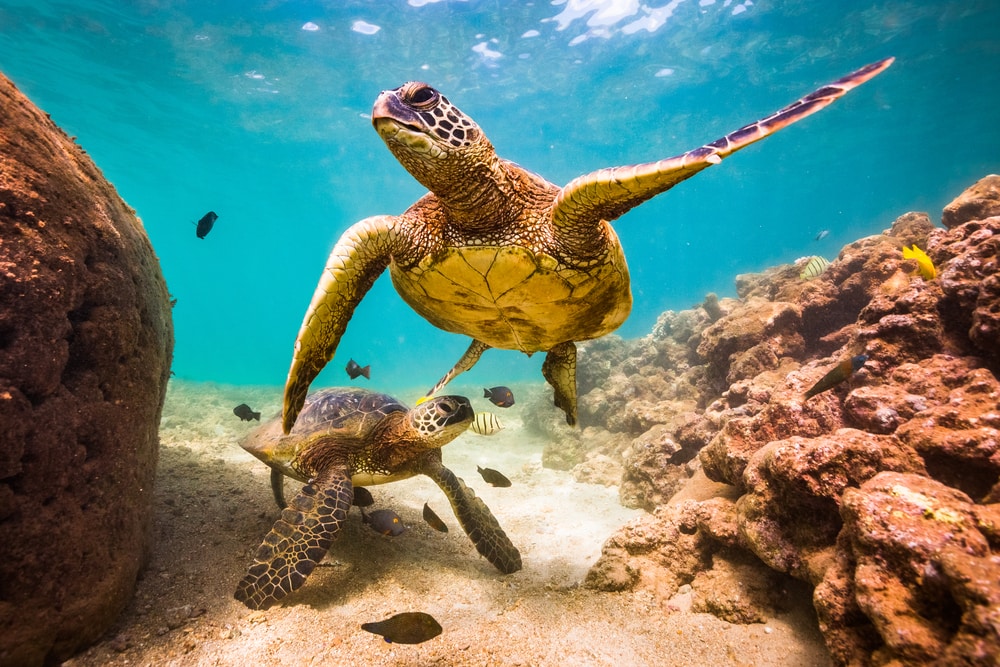

Sea turtles can’t retract into their shells
Unlike most freshwater turtles and land-dwelling tortoises, sea turtles can’t tuck their heads and limbs inside their shell. The structure of a sea turtle’s shell doesn’t provide enough room to pull in the head and limbs.
Terrapins and tortoises used their retracting abilities as a form of protection from predators. Sea turtles are either too large, too fast, or have a hard shell that makes predation more difficult.

Sea turtles can remain underwater for a long time
Although sea turtles need air to breathe, they can stay underwater for extended periods of time. The amount of time a sea turtle can go without fresh air depends on the species.
The leatherback sea turtle is capable of holding its breath for long periods of time due to its deep diving habits.
A sea turtle may stay underwater for up to two hours without coming up for air. However, this is usually when they’re resting. When active, sea turtles come up for air every few minutes.

Sea turtles return to the same nesting sites
Female sea turtles typically return to the same nesting site each year to lay eggs. That’s why it’s important to reduce harmful activity on nesting beaches and keep them clean.
If a nesting site is destroyed or polluted, females are forced to find a new nesting site. Nesting numbers have significantly reduced for many nesting beaches that once brought in hundreds to thousands of females each year.
FAQs
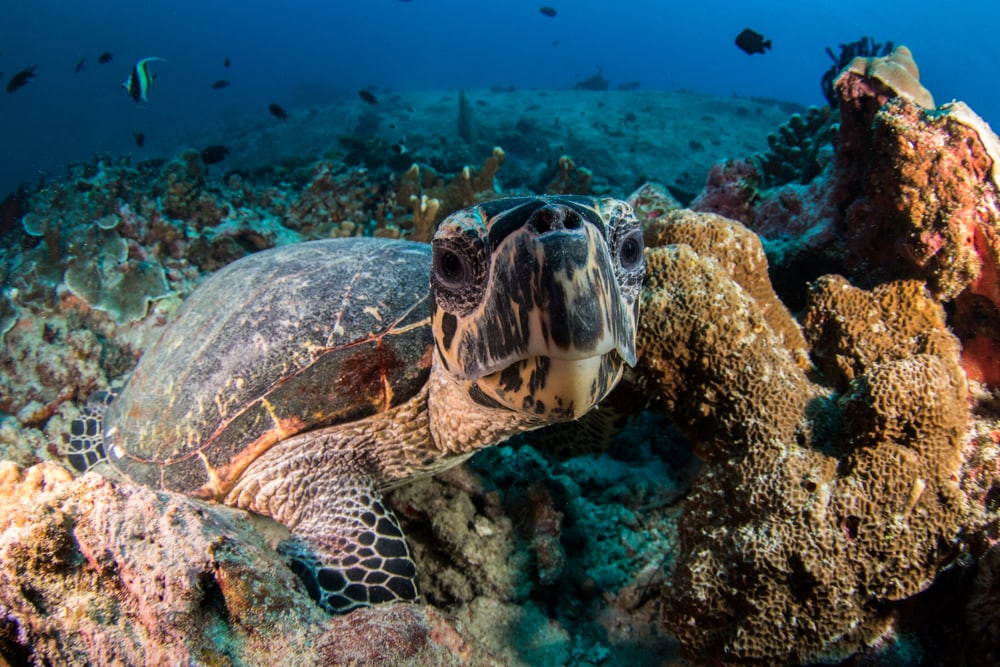
What are the problems faced by sea turtles?
Sea turtles face many problems that are primarily caused by human activities. The biggest threat to sea turtle populations is bycatch from harmful fishing gear.
Other harmful activities include egg poaching, harvesting, climate change, vessel strikes, and pollution.
Sea turtle hatchlings also have a very low survival rate. The size of a female sea turtle’s clutch can vary, but it’s usually at least 50-100 eggs per nest. Out of those eggs, it’s likely that only one hatchling out of 1,000 will become an adult.
Hatchlings are very fragile, but if they make it into the ocean they face more threats as juveniles.
Do sea turtles clean the ocean?
Sea turtles are like the lawnmowers of the sea because of their seagrass consumption. They keep seagrasses healthy by trimming them down as they munch, which helps prevent overgrowth.
Their eating habits benefit a number of species that rely on seagrasses as their habitat, such as crustaceans. Sea turtles also help keep coral reefs healthy.
Are there freshwater turtles?
Yes, there are numerous freshwater turtles found around the world. These turtles are called terrapins.
Examples of freshwater turtles include slider turtles, pond turtles, painted turtles, and snapping turtles. These turtles may easily be spotted resting on logs or rocks near or in permanent bodies of freshwater or brackish water.
How long do sea turtles live?
Since most sea turtles are highly migratory and live in the open ocean, the lifespan of sea turtles is a little difficult to record.
If you’ve ever watched Finding Nemo, you might remember the clownfish named Marlin meeting a 150-year-old sea turtle.
Although researchers know sea turtles do live a long time, they estimate their lifespan to be only about 50 years. However, it could be even longer. Since there are many dangers present in the sea, it’s likely that many sea turtle lives are cut short.









